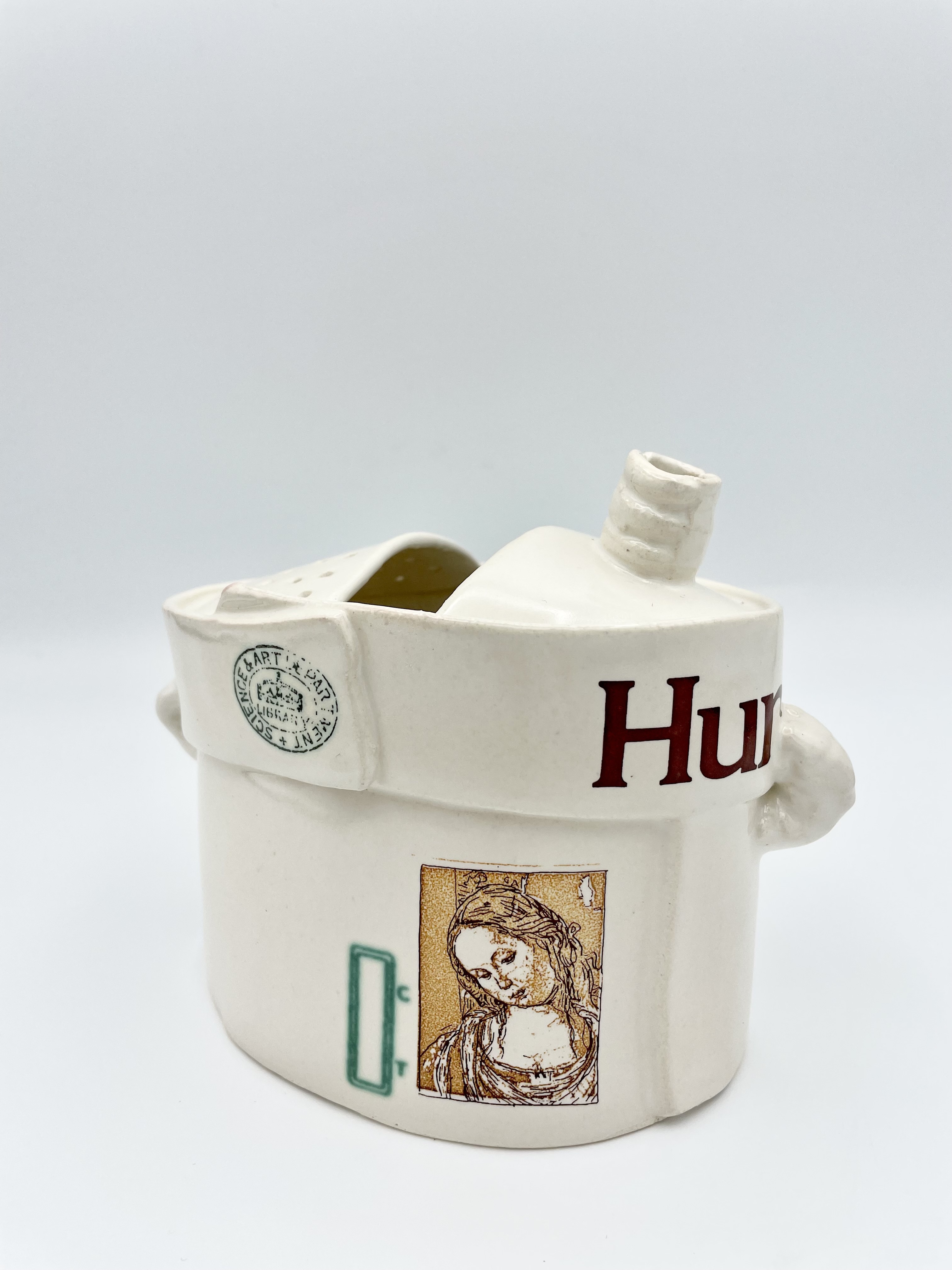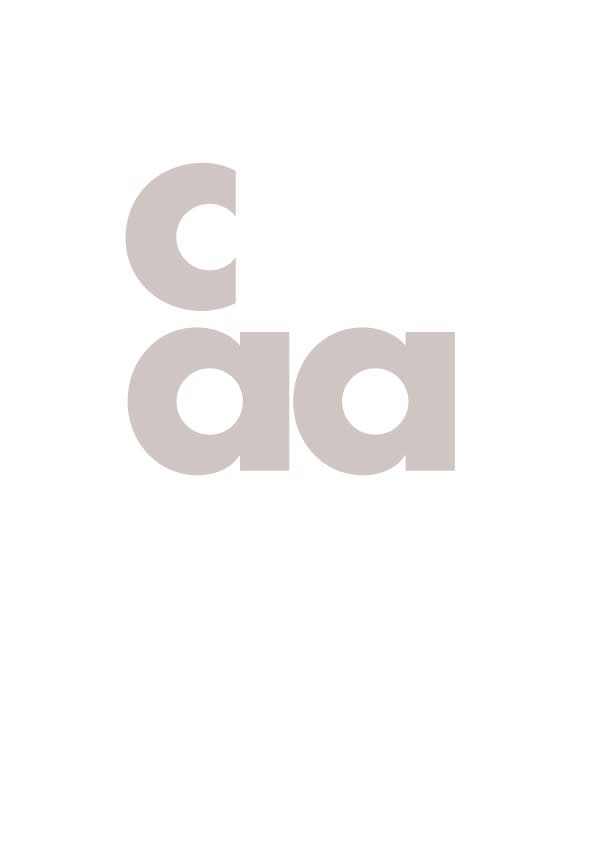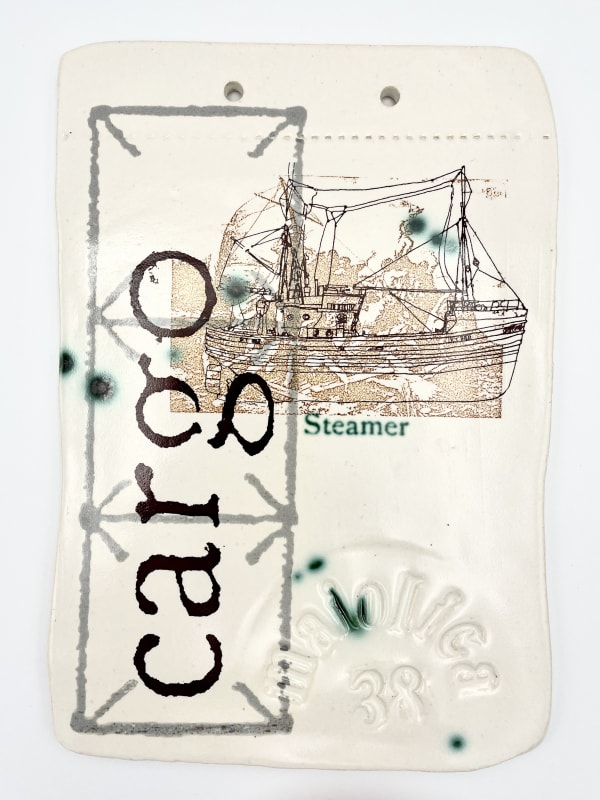Materials tell stories, and Stephen Dixon's practice excavates the past by bringing to light the stories of migration and conflict contained within ceramics. His new series, Maiolica and Migration (2022-2023), forms part of Dixon's exploration of the contemporary refugee crisis through the medium of ceramics.

Stephen Dixon, Truth and Falsehood plate, 2023
The works parallel the historical migration of tin-glazed pottery from North African ceramics to English Delftware (a journey of influence and early-modern trade that traverses Europe via Spain, France and Holland) with the migration patterns of contemporary refugees, many of whom travel across land and water from North Africa to seek asylum in Northern Europe. The most renowned examples of maiolica come from Renaissance Italy, where they were known as istoriato wares ("painted with stories") and famed for their detailed narrative scenes depicting historical and biblical scenes, but the medium originated in ninth-century Iraq. Brought across the Mediterranean to Moorish Spain and Italy through early modern trade networks, maiolica formed part of a thriving luxury goods market in Renaissance Italy before developing into various off-shoots and came to be known as faience in France, delftware in the Netherlands and England, and talavera in Spain.

Stephen Dixon, Human Cargo vessel, 2023
These migratory histories of the medium are embedded in Stephen Dixon's Maiolica and Migration works, which use the narrative element of maiolica to allude to the histories and realities of the 21st century refugee crisis. His tiles and pouring vessels act as three-dimensional sketchbooks, combining a rich visual archive of imagery into collages that rummage through historical periods and geographies, borrowing their palette of copper-green and iron-brown from early Italian maiolica wares. In Human Cargo (2023), Dixon collates a reproduction of an Italian Renaissance portrait with an ancient ship and the stamp of a Science & Art Department Library. The title Human Cargo alludes to the trafficking and exploitation of human beings, while the imagery, torn from its historical and cultural context in being re-assembled into Dixon's collage, speaks to the sense of dislocation and disconnection created by the experience of migration. The journeys of contemporary refugees often mirror the historical migration of maiolica, from North Africa and the Middle East to Europe. Material and history are intertwined. His imagery, meanwhile, creates a jumbled archive of human and material histories in visual form, suggesting the heterogeneity of experiences and cultural memories amongst those who migrate. The unclear relationship between image and text encourages us to make our own connections, reminding us of the subjectivity of history.
The pieces in Maiolica and Migration were exhibited at Walker Art Gallery, Bluecoat Display Centre and Williamson Art Gallery in Liverpool from 2022-2023, and are now available to purchase in Contemporary Applied Arts' Marylebone gallery or online.



